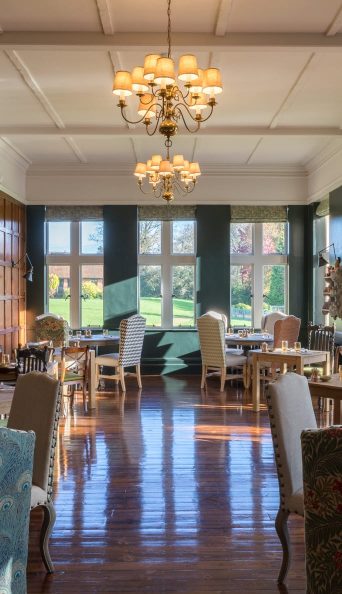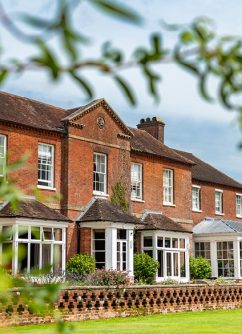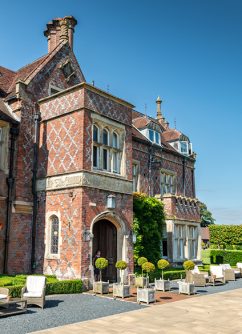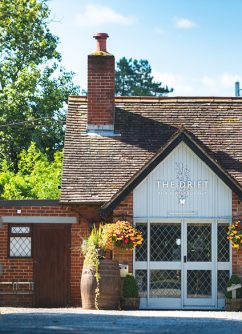Journal New Forest Collection
New Forest Vs Peak District
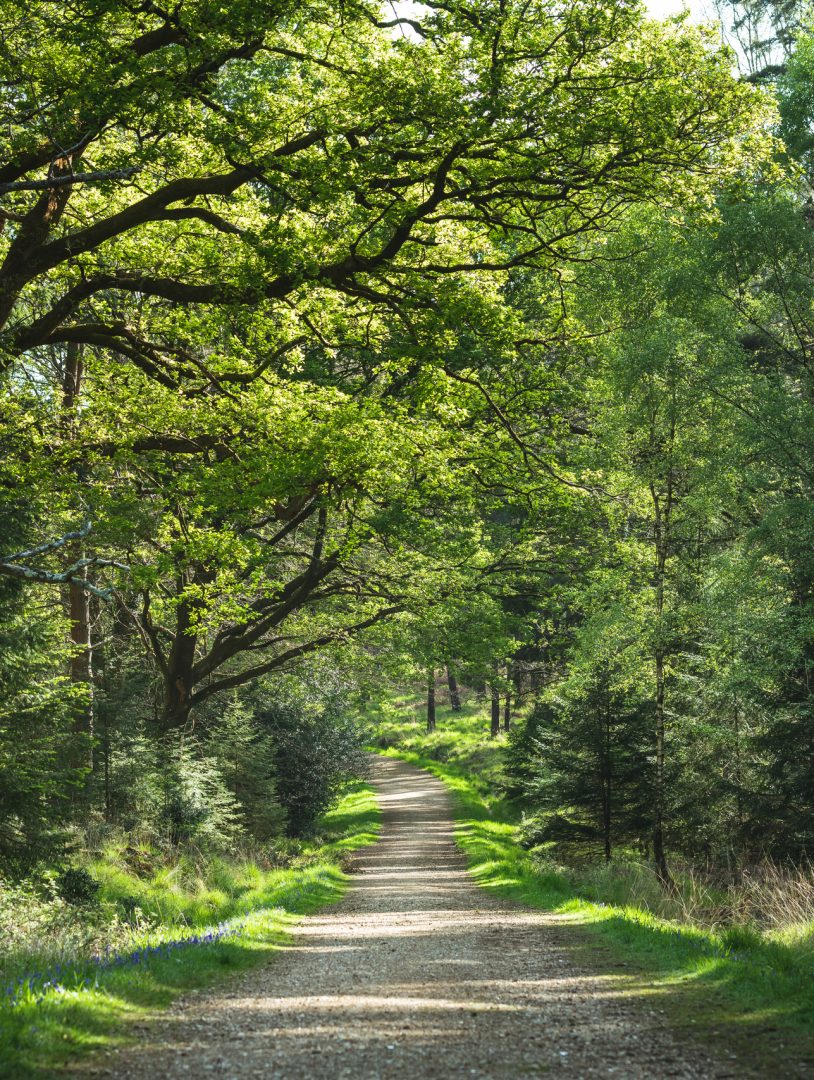
The United Kingdom is home to a plethora of breathtaking landscapes, sights and places to visit. Two of the most renowned areas are the New Forest and the Peak District. Both are gorgeous and expansive National Parks that offer stunning scenery, rich wildlife, and a range of outdoor activities for couples, groups and families alike. The New Forest is located in Hampshire in southern England and is known for its ancient woodlands, heathlands, and wild ponies. Constrastingly, the Peak District is located in the heart of England and offers dramatic hills, limestone valleys and charming villages to explore.
Despite their differences, both areas provide a unique and unforgettable experience for nature lovers, hikers, and adventure seekers alike.
Location
The New Forest is a National Park located in the county of Hampshire, in the south of England. It covers an area of approximately 566 square kilometres and is situated between the towns of Southampton, Bournemouth, and Salisbury. One of the most famous features of the New Forest is its charming, ancient woodlands, which are home to a diverse range of flora and fauna including deer, badgers, foxes, and the iconic New Forest ponies, and free roaming cows and pigs which live locally and roam freely throughout the area.
Today, the New Forest is a popular destination for outdoor activities such as hiking, cycling and horse riding. It also offers a range of attractions for visitors, including historic sites, museums, and villages such as Lyndhurst and Brockenhurst. The New Forest is a unique and treasured part of the English countryside and attracts visitors from around the world.
The Peak District is also a National Park located in the heart of England, covering an area of approximately 1,440 square kilometres. It spans across parts of Derbyshire, Staffordshire and Cheshire.
The Peak District landscape can be characterised by rolling hills, dramatic valleys, and limestone plateaus. It is also home to a diverse range of wildlife, including rare species such as the mountain hare and the red grouse. The area is also famous for its picturesque villages and historic landmarks, such as the stunning Chatsworth House and the strikingly quaint town of Bakewell.
The Peak District is a popular destination for outdoor activities such as hiking, cycling, climbing, and caving. The park is weaved with a network of footpaths and trails, including the famous Pennine Way, which runs through the area. The park also offers a range of attractions for visitors, including adventure parks, historic houses, and local markets.
New Forest Vs Peak District: Wildlife
Both the New Forest and the Peak District are home to an array of native species and wildlife. The New Forest is of course home to the gorgeous New Forest ponies and donkeys that roam throughout the area. You can also find local deer and cattle, especially in the summer months. Other wildlife includes the native New Forest pannage pigs that are turned out every autumn in an event called Pannage which dates back to William the Conqueror. Pannage involves the pigs eating the acorns and chestnuts that have fallen onto the floor in order to prevent the ponies eating them as acorns and nuts are poisonous to them.
Comparatively, the Peak District is also home to a host of native mammals, including badgers, foxes and brown hares around the White Peak. The Dark Peak is also home to the only population of mountain hares found in the UK. You can also spot local red deer in the moorland areas.
New Forest Vs Peak District: History and heritage
The New Forest has a long and rich history, dating back to the Bronze Age when it was home to early settlers. However, it was in 1079 that William the Conqueror declared the area a royal hunting ground and the forest has been managed and protected ever since. In the mediaeval period, it was a source of timber, which was used for building and shipbuilding. In the 17th and 18th centuries, the forest was used for charcoal production and for grazing animals, particularly for the production of wool.
Today, the New Forest is a treasured part of the English countryside, attracting visitors from around the world. Its ancient woodlands, heathlands, and bogs are home to a diverse range of flora and fauna and some rare species. The New Forest also has a rich cultural heritage, with historic landmarks such as the Rufus Stone, which marks the spot where King William II was killed in a hunting accident, and the Buckler’s Hard Maritime Museum, which tells the story of shipbuilding in the area.
The earliest evidence of human habitation in the Peak District dates back to the Neolithic period, around 4000 BC. Archaeologists have found evidence of ancient burial mounds, stone circles and other prehistoric structures in the area. The Bronze Age welcomed the development of agriculture and the Iron Age saw the Peak District home to a thriving farming community.
During the Roman period, the Peak District was part of the province of Britannia, and the Romans built several roads and forts in the area. After the Romans left, the Anglo-Saxons settled in the area and by the Middle Ages, the Peak District was a centre of lead mining and wool production.
In the 18th and 19th centuries, the Industrial Revolution transformed the Peak District, with new industries such as cotton spinning and papermaking emerging, as well as tourist hype surrounding the area.
Nowadays, the Peak District is a popular destination for walkers, hikers, and cyclists, as well as for those interested in history, culture, and the natural world. The Peak District is home to many historic buildings and landmarks, including mediaeval castles, stately homes and striking ancient churches. It is also home to a rich variety of wildlife, including birds of prey, deer, and rare plants.
New Forest Vs Peak District: Landscapes
The Peak District and the New Forest are two of the most popular national parks in England, known for their stunning landscapes and rich natural heritage. While both areas offer unique and stunning sights, they are quite different in terms of their landscapes and geography.
The Peak District is a rugged and hilly region located in central England, spanning parts of several counties including Derbyshire and Staffordshire. The Peaks are home to gorgeous rolling hills, deep valleys and craggy rock formations, as well as moorlands, limestone landscapes and historic villages. The Peak District is a popular destination for walkers, hikers, and outdoor enthusiasts, with many trails and routes winding through the hills and valleys.
In contrast, the New Forest is a primarily flat and forested region located on the south coast of England, within the counties of Hampshire and Wiltshire. The area of the New Forest is known for its ancient woodlands, heathlands and wetlands as opposed to the hilly and mountainous Peaks. The New forest is a fantastic location for walkers, families, couples and adventurers keen to explore the wider area and get closer to nature.
New Forest Vs Peak District: Walks
Both the Peak District and the New Forest are home to gorgeous wildlife, unique sights, walking trails and hiking routes. While the Peaks are home to more mountainous walks, the New Forest still offers an abundance of walking trails in its gorgeous forests.
The Peaks are home to:
Padley Gorge – a 6km, ‘easy’ hike that follows a bustling brook through the Burbage Valley and through Yarncliffe Wood.
Dovedale Walk – a 11.6km, ‘moderate’ walk that travels across the river Dove to Milldale.
Dovestone Reservoir circular walk – a ‘moderate’ 13.5km walk around Saddleworth Moor, providing gorgeous scenic views.
The New Forest:
Lyndhurst Circular walk – a ‘moderate’ 11.9km walk that begins at Bolton’s Bench and takes you through grassy plains where you can see sights of the native ponies.
Blackwater Arboretum Walk – a gorgeous yet short 1.1km walk through the Blackwater forests.
Acres Down Walk – a 4.3km walk with breathtaking surroundings through one of the UK’s largest unenclosed pasture lands.
Both locations are of course home to their own National Parks where you can explore the expanse of the National Parks and enjoy gorgeous sights and native wildlife. The Peak District National Park is comparatively larger but both are absolutely phenomenal for keen walkers and hikers.
New Forest Vs Peak District: Activities
Both locations are hot spots for adventure seekers, active groups, families and anyone who just can’t get enough of the diverse English countryside.
Walking and hiking is of course a great way to spend your time in the New Forest and the Peaks. The New Forest is home to over 140 miles of well-maintained walking trails that take visitors through some of the most beautiful parts of the forest, including short strolls, long distance hikes and everything else in between. Not to mention the historical sights such as Beaulieu Abbey, Buckler’s Hard, and the New Forest Museum.
The New Forest is also a popular destination for cycling, with miles of cycle paths and quiet country roads. Bike rental is available in many towns and villages such as at New Forest Cycling in Burley.
Similarly if you’re a fan of water sports, the New Forest has many lakes, ponds and streams that are perfect for canoeing, kayaking, and fishing.
The Peaks also offer the same kinds of active adventures and gorgeous sights within its mountainous peak landscape. You’ll find a wealth of walking and hiking trails, as well as ample opportunity to cycle and bike hire at locations such as Parsley Hay Bike Hire.
The Peak District is also a hotspot for some unique museums, such as the Crich Tramway Museum, Eyam Plague Village, and Caudwell’s Mill.
New Forest Vs Peak District: What makes them unique?
The Peak District offers a host of unique features that make it such a fantastic tourist location. Its varied landscapes offer a diverse range of habitats for wildlife and create breathtaking views for visitors. The Peak District also has a rich cultural heritage with many historic landmarks, including mediaeval castles, stately homes and ancient buildings. Not to mention a huge selection of delicious local produce such as the Bakewell Tart and Derbyshire oatcakes that can be found at local farmers’ markets and food festivals throughout the year.
The Peak District is also easily accessible from many major cities in England, including Manchester, Sheffield, and Derby which makes it a popular destination for day trips and weekend getaways, as well as longer holidays.
The New Forest is significantly different to the Peaks, yet still offers a host of unique features that make it such a popular travel destination for UK natives and those from further afield.
Firstly, the New Forest’s ancient Woodland is one of the largest remaining areas of ancient woodland in Southern England, with some trees dating back over 1,000 years! The forest has a diverse range of flora and fauna, including rare species that are not found in many other parts of the country which make the New Forest truly unique.
The New Forest is also one of the few places in England where common land still exists. This means that local people have the right to graze their livestock on the forest land, which has helped to maintain the traditional landscape and way of life founded hundreds of years ago. The New Forest’s broad history also dates back as far as the Bronze Age with stories detailing how the forest was used as a royal hunting ground.
New Forest: Accommodation and food
If you need any more reason to visit the gorgeous New Forest, it is also home to a host of accommodations and food spots. New Forest Collection is a truly remarkable venue with unique locations as part of the collection. Enjoy an adults only, romantic stay in the striking 800 year old Burley Manor or an even more unique stay in the Burley huts, genuine shepherds huts.
If you’re bringing the little ones you can enjoy the exciting Bartley Lodge and Beaulieu Inn. Both are home to their own picturesque grounds and offer the perfect location for a truly special stay in the stunning New Forest.
Not to mention a host of delicious eatery options. The restaurant at Burley Manor offers Mediterranean inspired dishes, as well as tapas and sharing platters perfect for foodies. The charming Drift, provides fantastic local produce in a quaint pub atmosphere.

